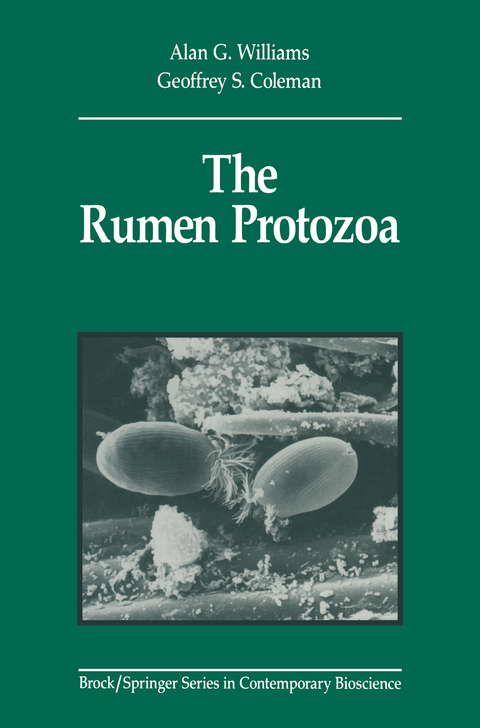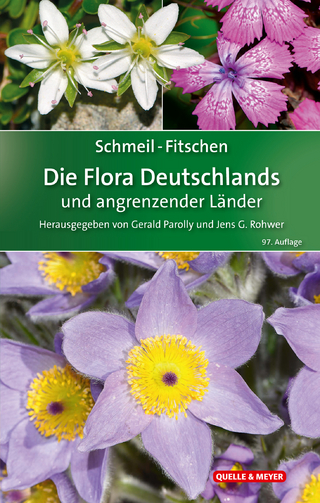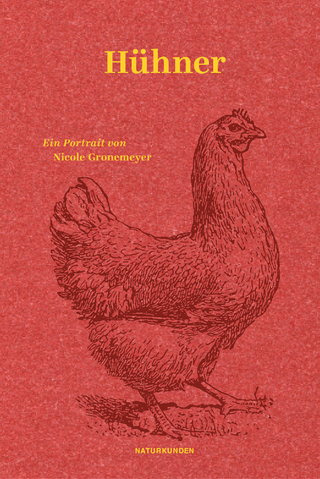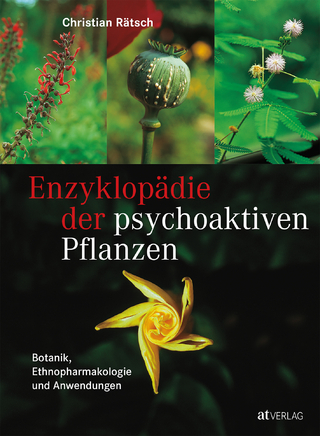
The Rumen Protozoa
Springer-Verlag New York Inc.
978-1-4612-7664-7 (ISBN)
Preface.- 1 Introduction.- 2 Identification and Classification of Entodiniomorphid Protozoa.- 2.1 Taxonomy of Entodiniomorphid Protozoa.- 2.2 The Genus Entodinium.- 2.3 The Genus Eodinium.- 2.4 The Genus Diplodinium.- 2.5 The Genus Eremoplastron.- 2.6 The Genus Eudiplodinium.- 2.7 The Genus Ostracodinium.- 2.8 The Genus Polyplastron.- 2.9 The Genus Metadinium.- 2.10 The Genus Epidinium.- 2.11 The Genus Enoploplastron.- 2.12 The Genus Ophryoscolex.- 2.13 The Genus Diploplastron.- 2.14 The Genus Elytroplastron.- 2.15 The Genus Epiplastron.- 2.16 The Genus Opisthotricum.- 2.17 The Genus Caloscolex.- 2.18 The Genus Rhinozeta.- 2.19 The Genus Parentodinium.- 2.20 Evolution of Entodiniomorphid Protozoa.- 3 The Holotrich Ciliates.- 3.1 Classification of the Rumen Holotrich Ciliates.- 3.2 Distribution of Holotrich Ciliates.- 3.3 Population Determinants.- 3.4 Species Description.- 3.5 Evolution of the Holotrich Ciliates.- 4 Methods Used for the Separation and Cultivation of Protozoa.- 4.1 Techniques for the Isolation of Ciliates from Rumen Contents.- 4.2 In situ Culture of Selected Protozoa.- 4.3 Cultivation of Entodiniomorphid Protozoa In vitro.- 4.4 Cultivation of Holotrich Ciliates In vitro.- 4.5 Continuous Culture Techniques.- 5 Association of Bacteria and Fungi with Rumen Ciliates.- 5.1 Intracellular Bacteria.- 5.2 Bacteria Attached to the Pellicle.- 5.3 Intracellular “Parasites” of Rumen Ciliates.- 6 Metabolism of Entodiniomorphid Protozoa.- 6.1 Metabolism of Starch.- 6.2 Metabolism of Cellulose and Cellobiose.- 6.3 Metabolism of Pectin, Hemicelluloses, and Related Compounds.- 6.4 Engulfment and Utilization of Bacteria.- 6.5 Engulfment and Utilization of Ovals and Fungi.- 6.6 Metabolism of Free Amino Acids.- 6.7 Metabolism of Protein.- 6.8 Sources of Amino Acids forProtozoal Growth.- 6.9 Metabolism of Free Constituents of Nucleic Acids.- 6.10 Metabolism of Lipids.- 6.11 Metabolism of Phospholipids.- 6.12 Metabolism of Lactic Acid.- 6.13 Uptake and Metabolism of Other Entodiniomorphid Protozoa.- Appendix: Techniques Used in Experiments on the Metabolism of Entodiniomorphid Protozoa.- 7 Structure of Entodiniomorphid Protozoa and Its Relationship to Function.- 7.1 General Description of Structure.- 7.2 Structure of Vestibular and Cytopharyngeal Regions.- 7.3 The Cilia and Infraciliature.- 7.4 The Paralabial Organelle.- 7.5 The Contractile Vacuoles.- 7.6 The Cytoproct (Rectum).- 7.7 The Pellicle (Cortex).- 7.8 The Boundary Between Ectoplasm and Endoplasm.- 7.9 Division of Entodiniomorphid Protozoa.- 7.10 Conjugation.- 7.11 Protozoal Chemotaxis and Feeding.- 7.12 Protozoal Metabolic Compartments.- 7.13 Rate of Clearance of Soluble and Particulate Materials.- 8 Metabolism of Holotrich Protozoa.- 8.1 Carbohydrate Metabolism.- 8.2 Oxygen Utilization.- 8.3 Nitrogen Metabolism.- 8.4 Lipid Metabolism.- 8.5 Metabolism of Nucleic Acids.- 9 Factors Affecting Protozoal Populations In vivo.- 9.1 Infection of Young Ruminants.- 9.2 Interrelationships Between Protozoal Species.- 9.3 Host Specificity.- 9.4 Geographical Distribution.- 9.5 Effect of Feed Composition.- 9.6 Diurnal Variation in Densities of Entodiniomorphid Protozoa.- 9.7 Seasonal Variation.- 10 Role of Protozoa in the Rumen.- 10.1 Metabolism of Cellulose and Hemicellulose.- 10.2 Metabolism of Starch.- 10.3 Metabolism of Bacteria.- 10.4 Metabolism of Protein.- 10.5 Effect of Protozoa on Rumen Metabolites.- 11 Effect of Ciliate Protozoa on the Productivity of the Host Ruminant.- 11.1 Post-Ruminal Digestion of Protozoa.- 11.2 Effect of Protozoa on Blood Metabolite Concentrations.- 11.3 Effect of Protozoa on Animal Growth.- 12 Protozoa and the Health of the Host Animal.- 12.1 Appearance of Animal.- 12.2 Detoxification.- 12.3 Lactic Acid Acidosis.- 12.4 Copper Toxicity.- 12.5 Bloat.- 13 The Flagellate Protozoa in the Rumen.- 13.1 Description and Classification.- 13.2 Infection of the Host and Population Density In vivo.- 13.3 Cultivation.- References.
| Reihe/Serie | Brock Springer Series in Contemporary Bioscience |
|---|---|
| Zusatzinfo | XII, 441 p. |
| Verlagsort | New York, NY |
| Sprache | englisch |
| Maße | 155 x 235 mm |
| Themenwelt | Sachbuch/Ratgeber ► Natur / Technik ► Naturführer |
| Naturwissenschaften ► Biologie ► Ökologie / Naturschutz | |
| Naturwissenschaften ► Biologie ► Zoologie | |
| ISBN-10 | 1-4612-7664-0 / 1461276640 |
| ISBN-13 | 978-1-4612-7664-7 / 9781461276647 |
| Zustand | Neuware |
| Haben Sie eine Frage zum Produkt? |
aus dem Bereich


